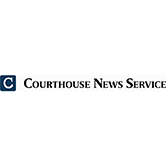
(CN) - Union health funds alleging that AstraZeneca paid generic drugmakers not to challenge its Nexium patents were properly certified as a class, the 1st Circuit ruled.
AstraZeneca owns several patents related to its blockbuster heartburn drug Nexium, which made $3.8 billion for the company in 2013.
When three generic drug companies sought to market a generic version of the drug, AstraZeneca sued them for patent infringement, and eventually settled with each, agreeing to pay the generic makers a significant about of money in exchange for not challenging the validity of the Nexium patents.
The deal has kept any generic substitute for Nexium from reaching the market even though AstraZeneca's patents expired in May 2014.
Several union health funds that reimburse members for prescription drug costs sued AstraZeneca in Massachusetts, alleging that the Nexium patents would have been held invalid but for the pharmaceutical company's unlawful noncompete agreements with generic manufacturers.
The patents were invalidated in both Europe and Canada as obvious in light of earlier AstraZeneca patents.
Claiming that a generic version of Nexium could have been available in 2008, the complaint by the union funds says they paid an inflated price for the drug for the last seven years.
The 1st Circuit affirmed class-action status for the case last week, despite claims that the lack of a generic alternative has not injured all class members.
In support of this argument, AstraZeneca had pointed out that brand-loyal consumers would have kept buying Nexium even if a generic were available.
But the Boston-based federal appeals court called it "difficult to understand why the presence of uninjured class members at the preliminary stage should defeat class certification."
"Ultimately, the defendants will not pay, and the class members will not recover, amounts attributable to uninjured class members, and judgment will not be entered in favor of such members," Judge Timothy Dyk, sitting by designation from the Federal Circuit, wrote for a three-member panel.
It does not harm the defendants to include plaintiffs who are potentially ineligible to recover damages, and Supreme Court precedent does not require every putative class member to show injury before class certification, the court found.
"We think that a certified class may include a de minimis number of potentially uninjured parties," Dyk said. "We need not decide whether it is ever permissible to define a proper class including more than a de minimis number of uninjured parties since we conclude that it has not been shown that the class here includes more than a de minimis number of uninjured parties."
Subscribe to Closing Arguments
Sign up for new weekly newsletter Closing Arguments to get the latest about ongoing trials, major litigation and hot cases and rulings in courthouses around the U.S. and the world.








